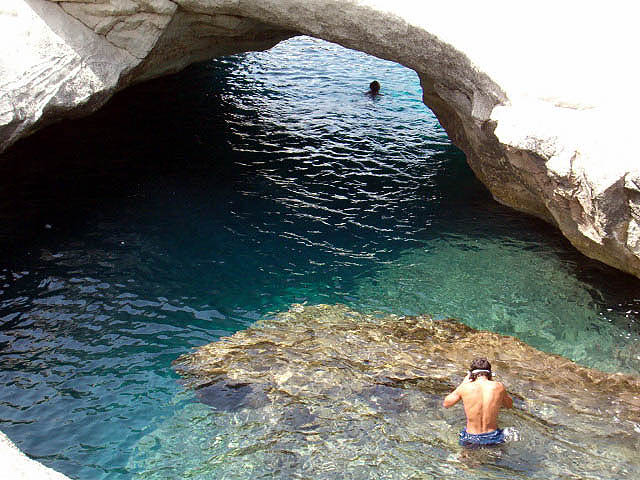Geographical & Historical Outline of Milos
Milos lies at the south-west of the Cyclades group.
It is separated from Kimolos by a narrow channel, about 1 nautical mile wide.
The island is 86 nautical miles from Piraeus.
Its surface area is 151 square kilometres and its varied coastline is 125 kilometres long.
Milos has a volcanic, hilly terrain, and its soil conceals great mineral wealth, deriving from its volcanic origins.
Its highest peak is Profitis Elias in the north-west part, rising to 751 meters.
Geographical & Historical Outline of Milos
The first settler of the island was called Milos and it is from him that it derives its name.
Human habitation on Milos goes back to 5000 BC.
Obsidian was quarried here from prehistoric times; this is a hard, black, volcanic rock that was used to make weapons and tools.
This substance was transported in boats all over the Aegean by the prehistoric inhabitants of the island.
As a result, they developed a strong fleet and became skilled sailors and merchants.
The traces of occupation found during the excavations at Fylakopi which is thought to be the oldest city on the island, go back to about 3000BC.
During the Middle Cycladic period (2000 -1550 BC) this city reached the peak of its prosperity.
The islanders took part in the naval battle of Salamis, and the battle of Platea. In 416 BC, during the Peloponnesian War between Athens and Sparta, the island was destroyed and abandoned.
It was later captured by the Macedonians, the Ptolemies of Egypt and the Romans.
During the Roman Conquest, a number of new buildings were constructed (Ancient Theater), and Christianity made its appearance, probably during the 1st century.
The Catacombs of the island, the most extensive in Greece and among the most significant in the whole Roman Empire, are undeniable proof of this.


